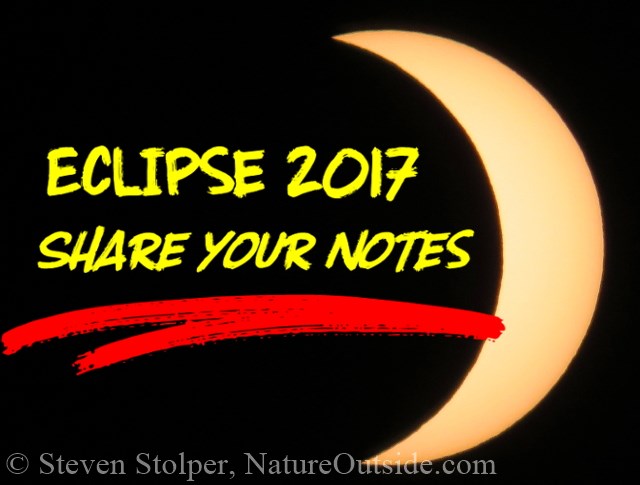
I recently shared my experience observing a solar eclipse from a village in Zambia. Here’s a chance for you to share your observations from the 2017 Solar Eclipse in the United States.
I invite you to share your observations using the comments section below. What did you notice? Did the temperature change? The light levels? How did wildlife react? Domesticated animals? Birds?
Below are my notes from the eclipse. But I’d really like to hear from you.
This post contains affiliate links.
10:14 AM – A Misunderstanding
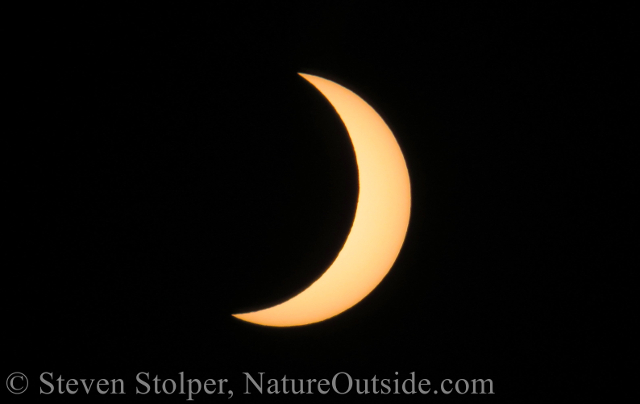
I had planned to hike to a nearby flood control channel and stand on a levy. But it turns out I have an unobstructed view right on my doorstep.
So I set up my digital camera atop my tripod on the sidewalk. I hang an old solar filter, designed for a telescope, on the lens. It’s too large and hangs in front of the lens like weird “camera bling.” But it does the job.
The weather seems strange. It’s a little hazy. But that’s not unusual.
But the light level is all wrong. It feels more like 7:15 AM, not 10:15 AM. The wind is calm and it feels unseasonably cool. The shadow of my tripod shows dim against the ground.
I suddenly realize that I misread the time! The charts and maps I found on the internet had eclipse times. Near my location in Northern California, the map reads 10:20 AM. I realize I’ve made a stupid mistake! The time isn’t the starting time of the eclipse – it’s the time of local maximum (totality if you’re in the right place). The eclipse has already started!
10:19 AM – Don’t Look at the Eclipse

It’s downright chilly – in August!
A worker doing maintenance in the area expresses curiosity. “Is it still going on?” He says his mother warned him not to look at the eclipse without eye-protection. He says he still wants to. I advise against it.
I haven’t heard a bird since the start of the eclipse. Not a single “cheep.” Nothing is flying. It feels like a winter morning.
My camera battery is running out! I hurriedly switch to my spare battery.
10:20 – Local Maximum

This is the local maximum at my part of Northern California. It was predicted to be around 75%.
Darkness. There’s not much ambient noise. Even the traffic from the nearby freeway is gone. I wonder if everyone else is preoccupied with the eclipse like I am? NASA predicts 75% of the sun will be covered for the San Francisco Bay Area.
The sun is 93,000,000 miles away. Light travels at 186,000 miles per second. I do some quick math. The light I’m seeing traveled 8 minutes and 20 seconds to reach my eye.
I’m standing in semidarkness. The tripod legs cast long shadows.
10:44 – Waxing Sun
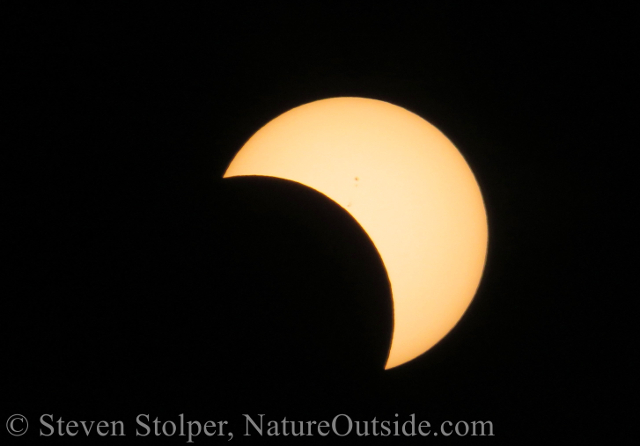
The sun is waxing (the Moon’s shadow receeds).
The sun is waxing. It’s noticeably brighter and the shadows cast by my tripod have greater contrast with the ground.
From the Internet: The Sun is 864,400 miles (1,391,000 kilometers) across. This is about 109 times the diameter of Earth. The Sun weighs about 333,000 times as much as Earth. It is so large that about 1,300,000 planet Earths can fit inside it.
10:53 – It’s a bird!
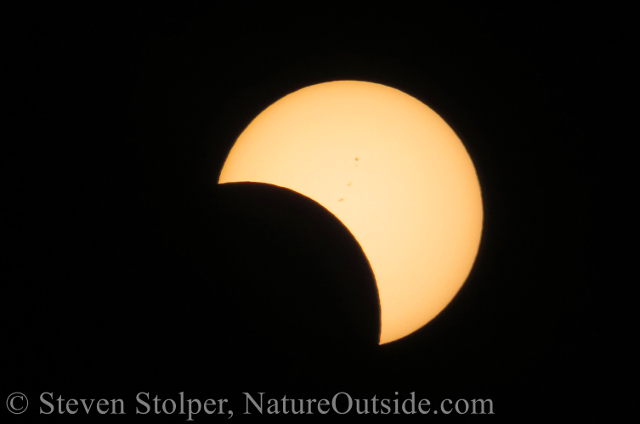
Sunspots are visible in this picture.
I hear a bird!
It’s a bird I hear often in high altitude pine forests, in the Sierras. It’s mechanical repeating call is like a car-alarm going off in the early morning. This bird is a relatively new arrival in my neighborhood. And to my great frustration I can’t figure out what kind of bird it is! It’s been tormenting me all summer.
11:06 – Rise and Shine
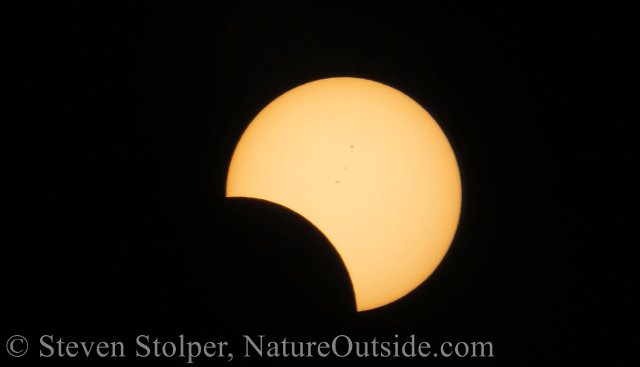
Chestnut-backed chickadees break the stillness. Soon after, the birds start their morning chorus. I’m glad to be wearing a wide-brimmed hat. It’s getting bright again and I have trouble seeing the image of the sun in the screen of my digital camera.
11:25 – It Smells Like Garlic
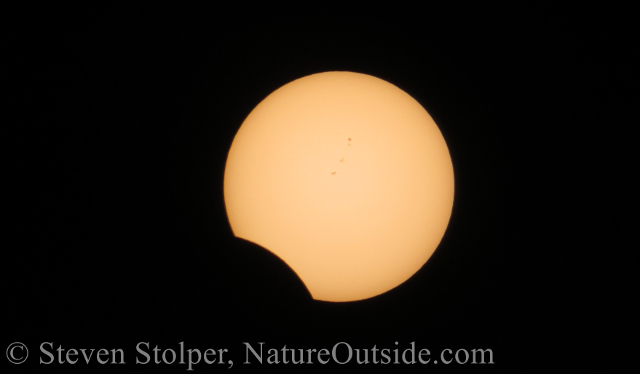
The end of the eclipse. Sunspots are still visible on the Sun’s disk.
A breeze from the south carries the smell of garlic from Gliroy, a town 40 miles away. Gilroy is the “Garlic capital of the world.” This is an “afternoon breeze” and very unusual for a morning.
I start to sweat. It’s suddenly a hot August morning. A crow takes to the air. Chestnut-backed chickadees forage in the tree behind me.
It’s all over but the shouting. And I’m grateful to witness this wonderful natural event.
Please Write Your Observations Below
Please feel free to share your own observations about the eclipse in the comments section below.
Related Articles on NatureOutside
Change Your Trail to Change Your Attitude
Mysteries on the Beach (Part 1)
For fun facts and useful tips, join the free Bushcraft Newsletter.



Leave a Comment